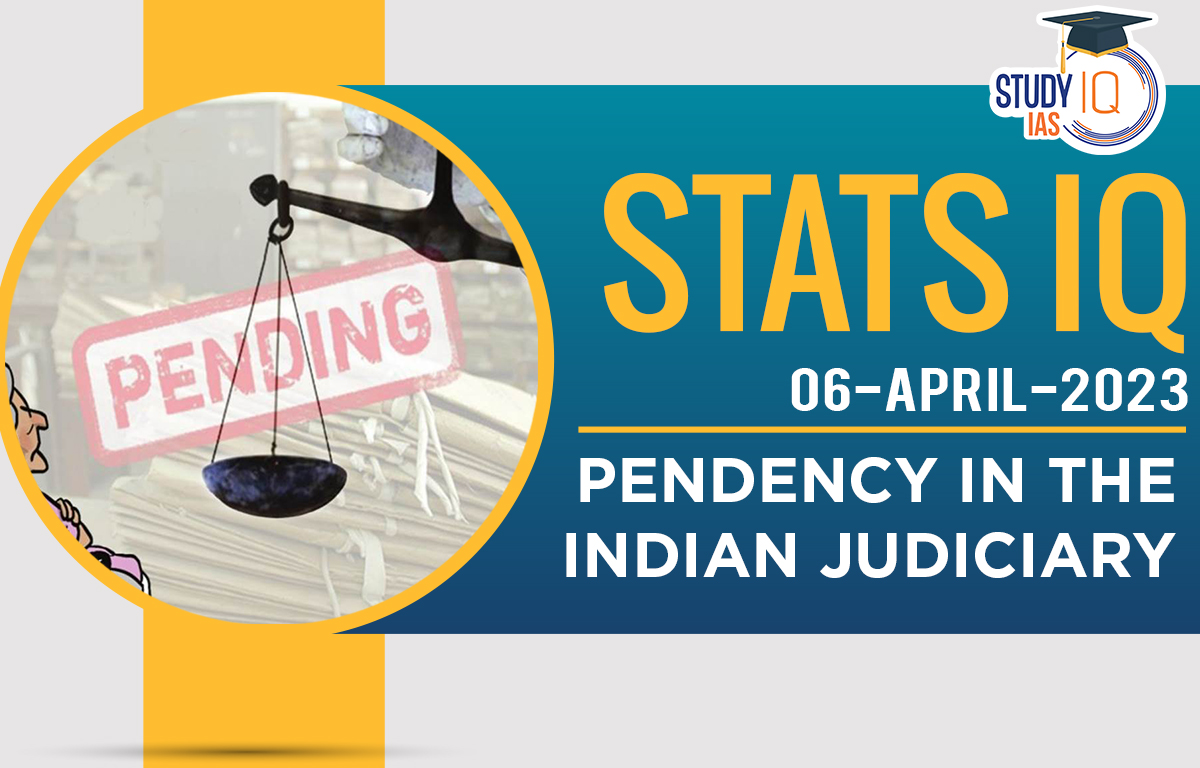Context: The India Justice Report (IJR) 2022 categorises data of States and UTs, based on the police, judiciary, prisons, and legal aid.
Justice Delivery in States:
- Large and mid-sized states: Karnataka ranked 1st followed by Tamil Nadu, Telangana, Gujarat, and Andhra Pradesh, respectively.
- Uttar Pradesh ranked the lowest (18th) among large states.
- Small States: Sikkim ranked first among 7 small states while Goa was at the bottom.
Pendency in States (2018-2022)
Current backlog of 4.8 crore cases in the judiciary.
- 1 in every 4 High Court (HC) cases is pending for more than 5 years.
- In Allahabad and Calcutta HCs, pendency of cases was over 63%.
- Northeastern HCs including Tripura, Sikkim and Meghalaya had less than 10% cases pending.
Rate of Case Clearance in Indian HCs (2018-2022):
The clearance rate in 2022 was 95%, with 5% getting added as a backlog.
- The rate was poorer during the pandemic years: 83% in 2021 and 77% in 2020.
- Madras HC had a high clearance rate of 107% in 2022.
- Tripura and Manipur, the clearance rate was over 100% as the supply of fresh cases was lower.
- Gujarat, Rajasthan, Himachal Pradesh and Madhya Pradesh had low clearance rates of about 80% or lower.
Judicial Vacancy(2022)
India had only 19 judges per one million people.
- Overall judicial vacancy in Indian HCs was 29.8% and High Court staff vacancies were at 25.6%.
- In Gujarat, Madhya Pradesh, and Rajasthan more than 40% of HC judge positions were vacant.
- Only 13% of HC judges and 35% of Subordinate Court judges are women.
Causes of Pendency:
- More Cases per Year: Active cases in HCs increased from over 41 lakh in 2014 to 53 lakh in 2022.
- Less Number of Judges: Number of judges is either stagnant or not increasing.
- Low Spending: Except for Delhi and Chandigarh, no State spends more than 1% of its total annual expenditure on the judiciary.
- Under Utilization of Funds: Most States have not fully utilised the funds given to them by the Central Government.
Pendency in Indian Judiciary: National Judicial Data Grid
- 93 crore cases are pending in the subordinate courts, 49 lakhs in High Courts and 57,987 cases in Supreme Court.
- In the Supreme Court, more than 30% of pending cases are more than five years old while in the Allahabad High Court, 15% of the appeals have been pending since 1980s.
- High Courts have high pendency with half of all the 8 million cases pending for more than three years.


 Daily Quiz 18 April 2025
Daily Quiz 18 April 2025
 OSSC CGL Syllabus 2025 and Exam Pattern ...
OSSC CGL Syllabus 2025 and Exam Pattern ...
 AI and its Regulation in India, Limitati...
AI and its Regulation in India, Limitati...





















